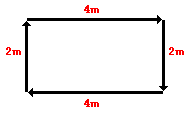1. Mechanics
-is the study of the motion of objects.
2. Kinematics
-is the science of describing the motion of objects using words, diagrams, numbers, graphs, and equations without regard for the cause.
3. Scalars
-are quantities that are fully described by a magnitude (or numerical value) alone.
-example : distance, speed
4.Vectors
- are quantities that are fully described by both a magnitude and a direction.
-example : displacement, velocity, acceleration
5. Distance
-refers to "how much ground an object has covered" during its motion.
-It is length of path.
6. Displacement
- refers to "how far out of place an object is"; it is the object's overall change in position.
-It is difference between starting and finishing positions with the direction of its motion.
-is the study of the motion of objects.
2. Kinematics
-is the science of describing the motion of objects using words, diagrams, numbers, graphs, and equations without regard for the cause.
3. Scalars
-are quantities that are fully described by a magnitude (or numerical value) alone.
-example : distance, speed
4.Vectors
- are quantities that are fully described by both a magnitude and a direction.
-example : displacement, velocity, acceleration
5. Distance
-refers to "how much ground an object has covered" during its motion.
-It is length of path.
6. Displacement
- refers to "how far out of place an object is"; it is the object's overall change in position.
-It is difference between starting and finishing positions with the direction of its motion.
7. Speed
-refers to "how fast an object is moving".
-The average speed is the rate of change of distance traveled with time.
-Average speed is also the average of all instantaneous speeds; found simply by a distance/time ratio.

-Instantaneous speed is the speed at any given instant in time.
-The instantaneous speed is equal to the magnitude of the instantaneous velocity.
-The average speed is the rate of change of distance traveled with time.
-Average speed is also the average of all instantaneous speeds; found simply by a distance/time ratio.
-The instantaneous speed is equal to the magnitude of the instantaneous velocity.
8. Velocity
-refers to "the rate at which an object changes its position."
-The average velocity is the rate of change of displacement with time.

-The instantaneous velocity is equal to the magnitude of the instantaneous speed.

-The average velocity is the rate of change of displacement with time.
9. Acceleration
- defined as the rate at which an object changes its velocity. An object is accelerating if it is changing its velocity.
-An object travelled with constant acceleration if the velocity is changing by a constant amount each second.
-Accelerating objects are constantly changing their velocity, we
can say that the distance traveled / time is not a constant value.
Example : A boy walks 4 meters East, 2 meters South, 4 meters West, and finally 2 meters North. He took 12 seconds.

The difference between speed and velocity
His average speed is distance / time = 12 / 12 = 1.5 m/s.
His average velocity is displacement / time = 0 / 12 = 0 m/s .

The difference between distance and displacement:
He has walked a total distance of 12 meters ("covered 12 meters of ground")
There is no displacement for his motion (displacement = 0 m). When finished walking, he is not "out of place"
His average speed is distance / time = 12 / 12 = 1.5 m/s.
His average velocity is displacement / time = 0 / 12 = 0 m/s .
No comments:
Post a Comment